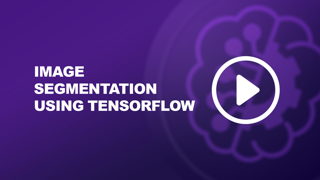Flower Recognition Using Convolutional Neural Network
Flower Recognition Using Convolutional Neural Network
Flower recognition using Convolutional Neural Networks (CNN) is a popular project in the domain of image classification. The goal of this project is to classify images of flowers into different categories based on their features. Convolutional Neural Networks are particularly suited for image recognition tasks due to their ability to capture spatial hierarchies and patterns in images.
Project Overview
In this project, you will build a deep learning model using CNNs to recognize and classify flowers into predefined categories such as roses, tulips, sunflowers, and more. The process involves preparing the dataset, building the CNN architecture, training the model, and then testing its accuracy.
Key Concepts Covered
- Image Preprocessing: Handling and transforming the images to the right size, normalizing pixel values, and augmenting the dataset for better generalization.
- CNN Architecture: Designing a deep learning model that includes convolutional layers, pooling layers, and fully connected layers.
- Model Training and Evaluation: Training the CNN model using the dataset, evaluating its performance using metrics like accuracy and loss, and tuning the model for better results.
- Image Data Augmentation: Applying techniques like rotation, flipping, zooming, and shifting to increase the diversity of the dataset and improve the model’s robustness.
Steps to Build the Flower Recognition Model
Dataset Preparation:
- The first step is to collect a dataset of flower images. Public datasets like the Oxford 102 Flower Dataset or datasets from Kaggle are commonly used.
- Organize the dataset into folders where each folder represents a category of flowers.
Image Preprocessing:
- Resize all images to a common size (e.g., 128x128 pixels).
- Normalize the pixel values to fall between 0 and 1.
- Split the dataset into training, validation, and test sets.
Build the CNN Architecture:
- Convolutional Layers: Extract features from images by applying filters. The convolutional layers detect patterns like edges, colors, and textures.
- Pooling Layers: Reduce the spatial dimensions of the feature maps while retaining the most important information.
- Fully Connected Layers: Flatten the output from the convolutional layers and pass it through fully connected layers for classification.
- Activation Functions: Use ReLU activation functions for non-linearity and softmax for multi-class classification.
Compile and Train the Model:
- Use a loss function like categorical cross-entropy and an optimizer like Adam.
- Train the model on the training set while validating its performance on the validation set.
- Monitor the model’s performance using metrics like accuracy and adjust hyperparameters to improve results.
Model Evaluation:
- Evaluate the model’s performance on the test set using accuracy, precision, recall, and F1-score.
- Visualize the training and validation losses and accuracies to check for overfitting or underfitting.
Deploying the Model (Optional):
- Once the model is trained, you can deploy it using Flask or Streamlit for real-time flower classification based on user-uploaded images.
Applications and Extensions
- Mobile Applications: Integrate the flower recognition model into a mobile app that identifies flowers in real-time.
- Botanical Research: Use the model for plant species identification in botanical research or agriculture.
- Interactive Learning: Create interactive tools for educational purposes where students can learn about different flower species.
Conclusion
Flower recognition using Convolutional Neural Networks is an engaging and practical project that helps you learn the fundamentals of deep learning, especially in image classification tasks. With the right dataset and a well-designed CNN architecture, you can achieve high accuracy in classifying various flower species.
For a detailed step-by-step guide, check out the full article: https://www.geeksforgeeks.org/flower-recognition-using-convolutional-neural-network/.









